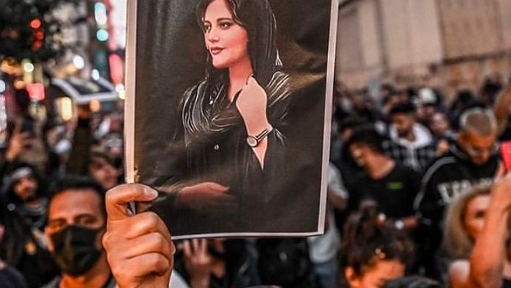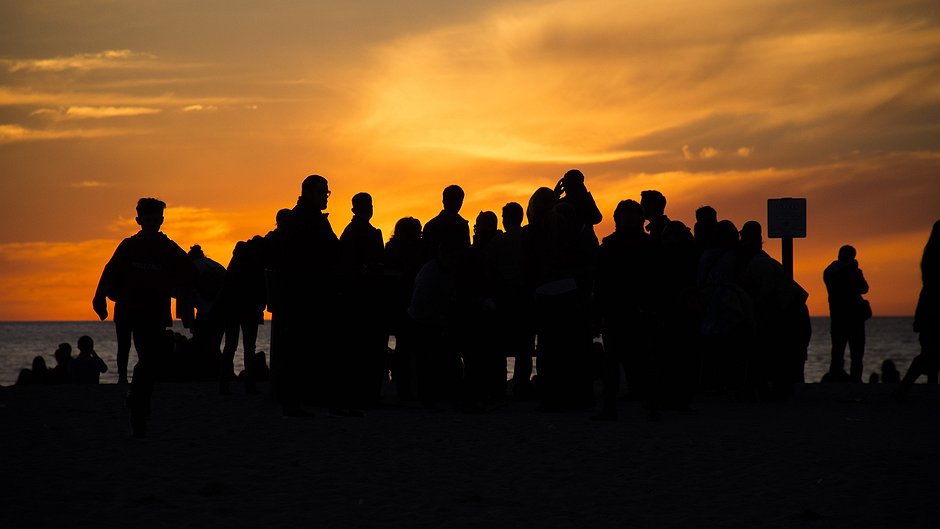
Iran Protests: 5 things to know about internet shutdowns
On 16 September 2022, Masha Zhina Amini, a 22-year-old Kurdish-Iranian woman died while in the custody of Iran’s so-called “morality police” following her arrest days earlier for wearing "inappropriate hijab". Since then, we have and continue to witness one of the largest waves of protests in Iran in recent history. Protests which began as calls for justice and accountability for Amini’s death have now expanded to include calls for government accountability and political and personal freedoms. In face of major ongoing protests, Iranian authorities have once again resorted to use of force and violence against protestors and have imposed internet shutdowns to silence them.
Here are the five observations about the internet shutdowns in Iran:
1. Politically sensitive events such as protests and elections intensify digital oppression and the use of internet shutdowns
Since the start of the protests in Iran, we have seen the use of localized mobile internet shutdowns in protests areas or areas of activity, or restricted services to domestic platforms via the National Information Network (NIN), as well as the sudden blocking of the last few remaining social media and messaging platforms such as Instagram and WhatsApp. Such measures are often deployed to prevent communication and the flow of information both within the country and internationally.
The Open Observatory Network Initiative (OONI), has documented the mobile network outages and the increased levels of internet censorship in Iran, such as the blocking of WhatsApp, Instagram, Linkedin, Skype, Google Play Store, Apple App Store, and encrypted DNS (DNS over HTTPS). Read key findings here.
2. Internet shutdowns are used to mask human rights violations
The protests have spread across a large number of cities across Iran where protestors have been met with brutal and violent crackdowns by the country’s security forces. So far hundreds of people -- including children -- have been killed and even larger numbers have been arrested including students, journalists, and activists. According to a report by Human Rights Activists News Agency, at least 348 people, including 58 children have been killed in the ongoing nationwide protests.
3. Internet shutdowns are on the rise globally
Iran's internet blackouts are only part of a rising trend of global digital dictatorship. According to a 2021report by the digital rights organization Access Now, at least 182 internet shutdowns in 34 countries worldwide were recorded, including the longest internet shutdowns on record. These internet shutdowns have become more sophisticated, and are lasting longer. Repressive regimes are teaching each other how to control protesters' web access with surgical precision. Since the November 2019 nationwide internet shutdown in Iran, we have seen almost every protest and demonstration in the country be accompanied by internet shutdowns or severe disruptions or restrictions to domestic services via the NIN. Read full report here.
4. Internet shutdowns cause major financial losses
Global internet shutdowns cost the global economy $5.45 billion in 2021. The internet monitoring group NetBlocks puts the economic cost of internet disruptions and mobile outages or restrictions in Iran at $37 million a day since 2019 and rising. This has a major impact on online businesses and those who rely on the internet for work in Iran, especially in the face of challenging economic conditions. Check cost of internet shutdown in your country here.
5. Communities affected by internet shutdowns need now more than ever all the available tools to fight back.
Measuring internet censorship and documenting human rights violations during internet shutdowns are some of the ways to preserve voices that authorities are trying to silence, and hold those in power to account.
Imagine having the power to check which websites and apps are blocked, and to collect data that can serve as evidence of internet censorship. The Open Observatory Network Initiative, through its OONI Probe software, makes this possible and it has published more than 900 million network measurements collected from 24K networks in 240 countries, regions, and territories.
So what can you do? Help fight against digital oppression by learning about how to measure internet censorship and how to document human rights violations during a shutdown with Advocacy Assembly’s free online courses.
As part of the Advocacy Assembly Shutdown Academy, we are offering through our online FREE course, digital activists the opportunity to learn how to collect data, measure internet censorship and hold those in power to account. Learn how to measure internet censorship with OONI’s course. Sign up today for free!
Documenting human rights violations with videos from citizen journalists and activists can expose abuses and advocate for change. Even if the information cannot be shared during the internet shutdown, these videos can be used as legal evidence to demand accountability.
In our course by WITNESS, we look at the different types of internet shutdowns, we also examine how to document human rights violations during a shutdown. We also show you how to prepare before, during, and after network disruptions or internet censorship. Take WITNESS course here!
Related courses

90 mins
 School of Data
School of Data
90 mins
 School of Data
School of Data Rory Peck Trust
Rory Peck Trust
50 mins
 Rory Peck Trust
Rory Peck Trust
Blogs

6 useful resources for journalists covering Covid-19
With a global pandemic spreading throughout the world, journalists are under increasing pressure to report accurate and relevant news for the masses. Often when covering a crisis, those on the reporting frontlines compromise their physical safety and mental health. To show some solidarity, the Advocacy Assembly team curated a list of useful resources from other organisations leading the way on this.

5 ways to find data for your next story
Data journalism is fast becoming a big trend in newsrooms across the globe. However, data isn’t always so easy to find. Here are five ways to get data for your next article.



